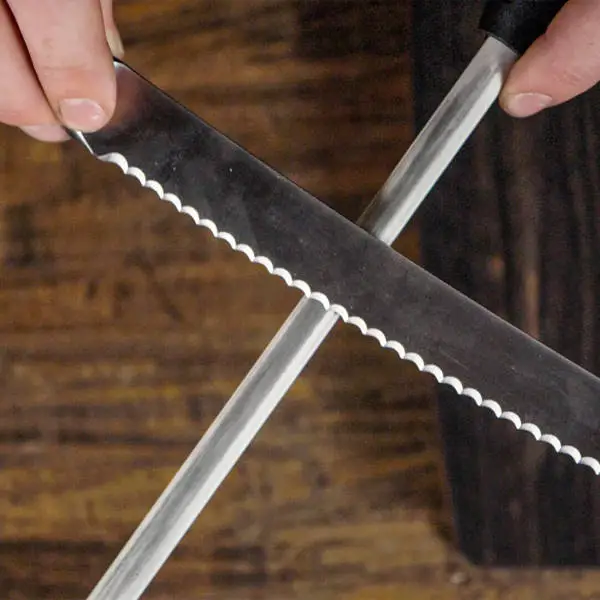
Ideally, you must make sure that your knives are sharpened with a sharpener– especially if they cost you an arm and a leg.
With an actual knife sharpener, you are certain that it will use the right amount of pressure to the blade to give it the razor sharpness that it needs.
If you have a serrated knife, you understand that they need regular sharpening to keep their blades from growing dull. Of course, you will not use the same type of sharpeners for these knives as you would for the regular ones.
Most people do not know this, but serrated knives often hold their edge longer than their straight-edged counterparts.
This makes them more difficult to restore without completely changing their shape. Therefore, sharpen them only when you notice that they are becoming ineffective.
This article will highlight how to make your serrated knives cut like new without a sharpener.
Use a Sharpening Rod
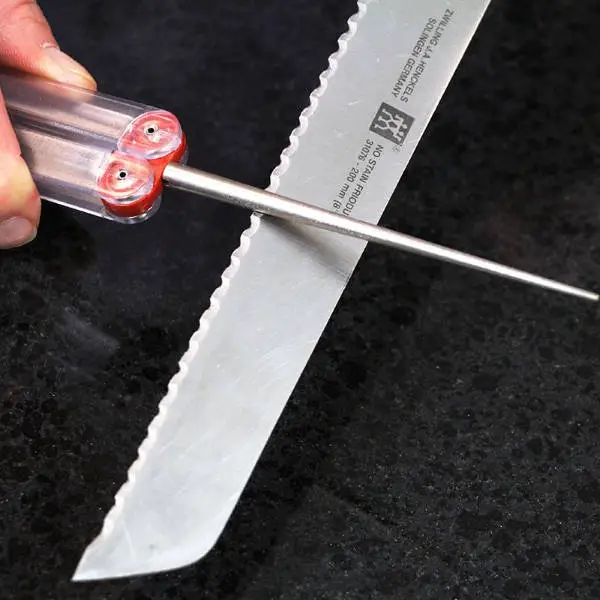
A sharpening rod is a great option for sharpening serrated knives because you can get a rod shape that has a taper to accommodate the different serration sizes.
To start, locate the side of the knife that has a beveled edge. Most don’t the same look on both sides.
In most cases, one side has a blade at the same angle all through to its edge while the other side will have the blade facing a downward angle right before the serrated edge.
These angles are known as bevels. When using a sharpening rod, only apply it to the beveled edges. When using these beveled angles as your guide, it is easier to understand how to work the rod. Always place it in the serrated gullets.
Typically, the bevels are about 13 to 17 degrees when compared to the blade’s edges. However, these will be at a 20 to 25-degree angle if the knife also has a straight-edged portion.
If it is your first time sharpening a serrated knife, you may want to use a permanent marker to mark the gullets, so you know you are hitting them at an appropriate angle.
Always make sure that you are moving the rod to match the diameter of the scallops. Especially if your sharpening rod is tapered, ensure to locate the rod in the gullet at the point where its diameter is the same size or smaller than the gullets.
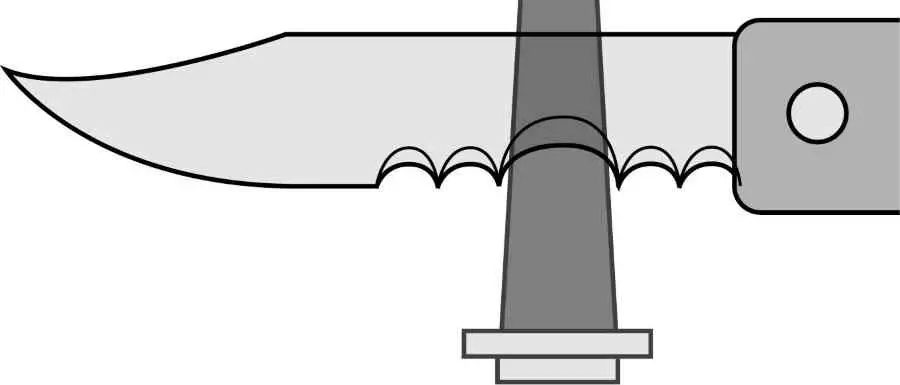
Begin by sharpening the gullet and running the rod along the first groove in a few strokes. Push it in the direction away from the blade’s edges and towards the knife’s spine.
For a more even grind keep rotating it as you push it.
However, make sure you are pushing it only to the point where the rod is at a similar diameter as the gullets so you won’t expand them.
Once you begin working, keep running your fingers through its backside to check whether you will feel some metal shavings. If so, then you know that you have sharpened the grooves successfully and it will only take you a few strokes to begin noticing this.
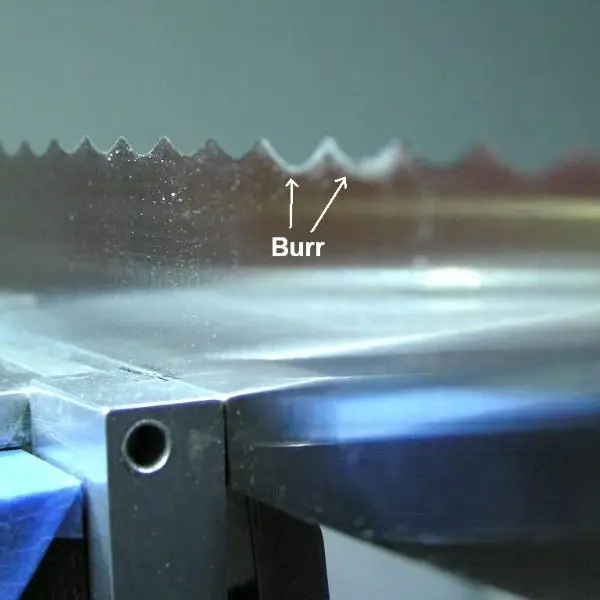
How will you know if there are some metal shavings – burrs? A great way is to run your fingernail through the back edges. If it catches, then you are certainly achieving your desired outcome on the blade.
Keep doing this for the entirety of the serrations, even if they are of different sizes. Remember only to let the rod fill the groves but not change their sizes.
Use fine-grit sandpaper to remove the metal shavings at the back. Be careful not to apply a lot of pressure.
Alternatively, you can use a coffee mug to sharpen any areas of the knife that are not serrated.
Sharpen With a Coffee Mug

You may have heard people talk about how they use their favorite coffee mugs to sharpen their knives.
If you are wondering whether this is true for serrated knives, then the answer is yes, you can sharpen them!
This is even better because you may not have a sharpening rod at your disposal either.
It is certainly not easy, but it is workable.
First, begin by looking at your mugs and find out which ones have space around the bottom. Choose one that has enough rough space around its bottom.
You may want to use some of the older mugs because you may end up making marks as you go.
Also, only use coffee mugs as teacups are often too delicate for this type of work.
Turn the cup upside down and find a smooth flat surface to place the cup, if the cup slips, you may end up cutting yourself. To prevent this just place a damp cloth underneath.
Hold the bottom with your free hand to keep it firmly in place and place the serrated edges against the rough bottom. Move it up and down along the serrations, as you would with a sharpening rod.
Use the edges of the mug to ensure that the serrations on the knife do not expand. Cover the full area of the scallop as you go by rocking it back and forth.
Repeat about 4 times with the same pressure for maximum results.
Remember to remove the burr, if any, with fine-grit sandpaper.
There You Have It – Sharp As New
This article provides tips on how to sharpen a serrated knife without tools. You always need to make sure that your knives are well cared for. Therefore, naturally, you must use a sharpener to keep them sharp.
The methods advocated above should not be used more times than necessary.
Also, it is important to note that the results from this will not be perfect, but they will still make a big difference.
As a rule of thumb, ensure that the knives are placed in blocks to keep the edges safe, so they do not become dull from contact with other utensils. It is also a great way to keep your hands from accidental cuts.
📌 Pin Me for Later Reading! 📌
Save this image to Serrated Knife Sharpening or DIY Knife Sharpening.
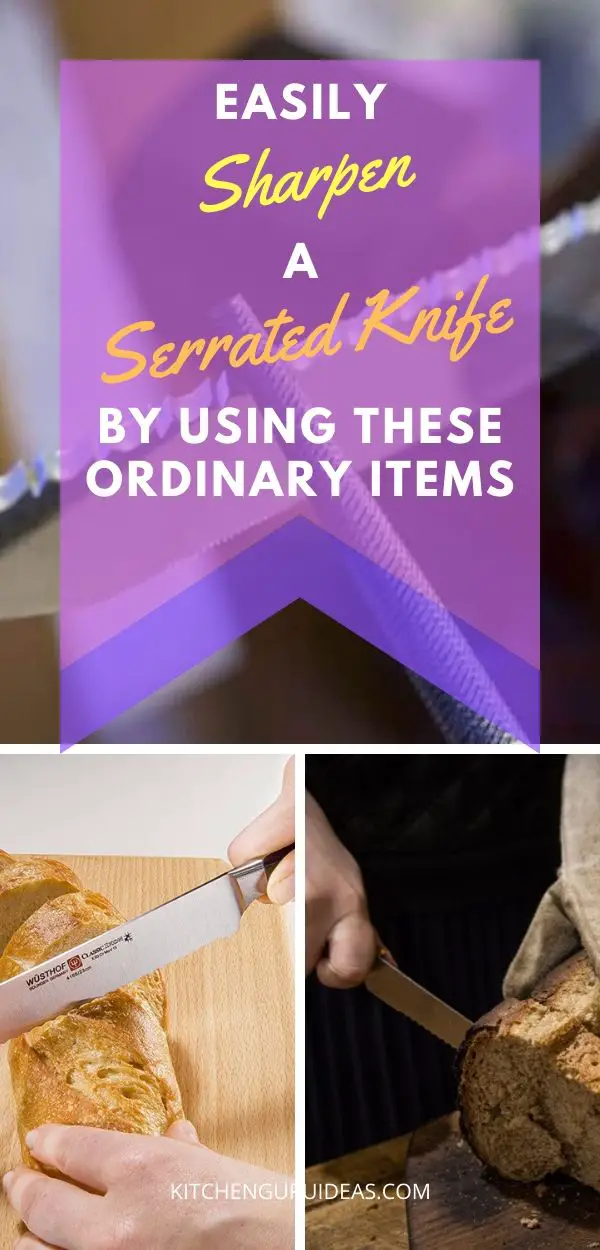
How do you sharpen your serrated knives?

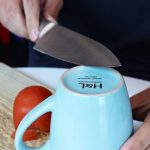

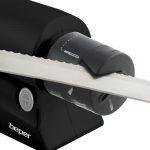
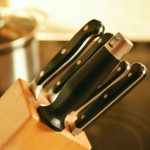
I personally use a Dremel Moto-Tool with a small grinding wheel to sharpen those serated devils.
The use of a coffee cup is genius! I’m 54 and have never heard of sharpening a knife with a mug. Goes to show that you can learn something new at any age. Thank you!